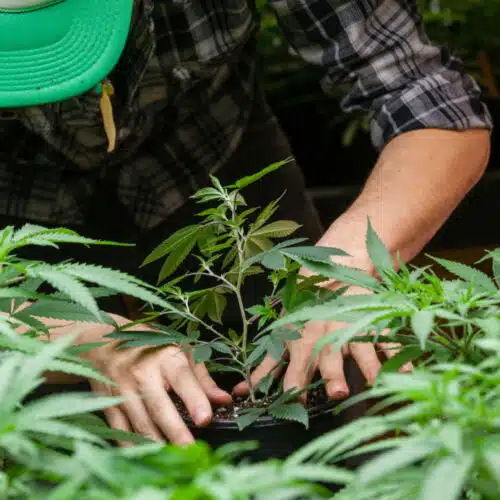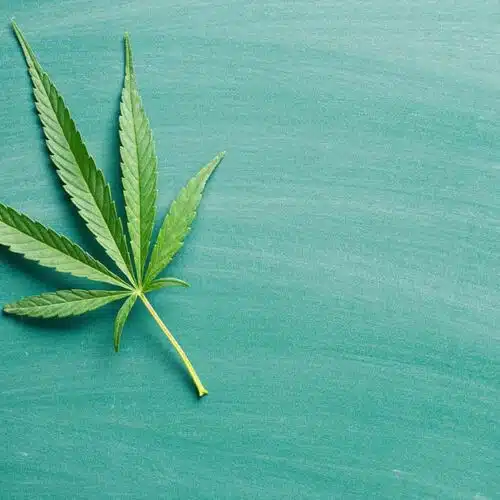Cannabis Reduces Infant Mortality
Surprising Connections Between Failure to Thrive and Cannabinoids
(NORTHERN CALIFORNIA) – Years ago, a friend of mine, a good Christian lady, had a child with “failure to thrive”. She had CPS all over her, looking for even the tiniest trace of child neglect. They found none. The child was well cared for, but she just didn’t seem that interested in eating. Her bottles often went half finished.
I believe that those bottles of formula, given from birth, were major part of the problem. Our bodies make chemicals called “endocannabinoids” that are closely related to THC and cannabidiol (CBD). Endocannabinoids control many bodily functions and are excreted into breast milk. When lactating female rabbits were injected with CBD, a non-psychoactive, plant-derived cannabinoid, there was “a significant accumulation of the drug in milk.” [1]
Endocannabinoids are also detected in human and cow’s milk, with the highest levels occurring the day after giving birth. This healthy dose of naturally-occurring endocannabinoids stimulates the suckling reflex in newborn mammals, including humans[2].
When newborn mice are given a chemical to block the effect between endocannabinoids and their CB receptors, the mice simply don’t know how to eat. Yet, if the blocking agent is mixed with an equivalent amount of THC, the mice eat and grow normally[3].
CB receptors work kind of like an ignition switch. First, you need the right kind of “key” (the right-shaped cannabinoid) to go into the “keyhole” (the receptor) to turn on the “engine’s” action (suckling, stopping pain or inflammation, or maybe killing a cancer cell). Phytocannabinoids (cannabinoids from plants, like THC) can mimic the effects of your endocannabinoids – they can turn on the same “ignition switches” as your body’s own cannabinoids. The blocking agents (antagonists) are like sticking a broken key stub in the keyhole. You can’t get a real key in, and the engine can’t turn on.
Scientists have bred mice that do not have CB receptors. They are poor, sickly things, prone to all sorts of ailments. Some scientists believe that there are people like those mice, having fewer than normal, or dysfunctional, CB receptors. And infants born with this condition have growth failure resulting from an inability to ingest food, just like those newborn mice[4].)
If “failure to thrive” infants were being breast-fed, they would get at least some of their mother’s normal endocannabinoids from her milk. If she were using cannabis, logically, her breast milk would contain not only her own endocannabinoids, but also the phytocannabinoids, THC and CBD. In CB receptor-deficient children, an extra dose of phytocannabinoids could make the difference between “failure to thrive” and a healthy child! However, since receptor deficiency is inheritable, the mother may be deficient, too, and unable to give her child sufficient amounts of endocannabinoids in her milk.
But all this is just conjecture on my part. Just me, grouping together various studies to make a theory about “failure to thrive” babies. Medical science surely isn’t going to say that having Mom smoking a little pot in the evening is going to help her baby do better, is it?
Well, tonight, I found a study that seems to say just that! It’s a sad little thing – an abstract of a study on the death of babies – yet vital facts can be learned from those soulless statistical studies. This one gave the infant death rates per 1,000 live births, and the drugs, if any, that the mother used during pregnancy.
A total of 2,964 babies were drug-tested at birth to see if they were positive for drugs – cocaine, opioids or cannabis were studied. 44% of the infants tested positive for all varieties of drugs, including the 3 being studied. During the first two years of their lives, 44 babies from the original group died. Since statistics are a drag to slog through, I’ll cut right to the chase – the deaths per thousand live births – the numbers tell the story.
“No drugs at birth” deaths……. 15.7 deaths per 1000 live births
“Cocaine positive” deaths…….17.7 deaths per 1000 live births
“Opiate positive” deaths…….18.4 deaths per 1000 live births
“Cannabis positive” deaths…. 8.9 deaths per 1000 live births [5]
The cocaine and opiate babies have a higher death rate than the “No drugs” babies – that was to be expected. But look at the “cannabis” babies! Having extra cannabinoids in their bodies at birth (and likely later, from 2nd-hand exposure, or breast milk) seems to have some sort of a protective effect. The “cannabis” infants have a mortality rate almost half of what the “No drugs” infants have!
Cannabis has a remarkable safety record – it has never caused a single death by overdose, so it is safer than the Tylenol that we give to our children. Some cannabinoids, like CBD, can’t get you high no matter how much you take, but are still quite effective medically. Perhaps it is time that someone considers doing a study of pediatric, non-psychoactive cannabinoid use to treat “failure to thrive” infants!
References:
[1] Mammary excretion of cannabidiol in rabbits after intravenous administration – ncbi.nlm.nih.gov/


